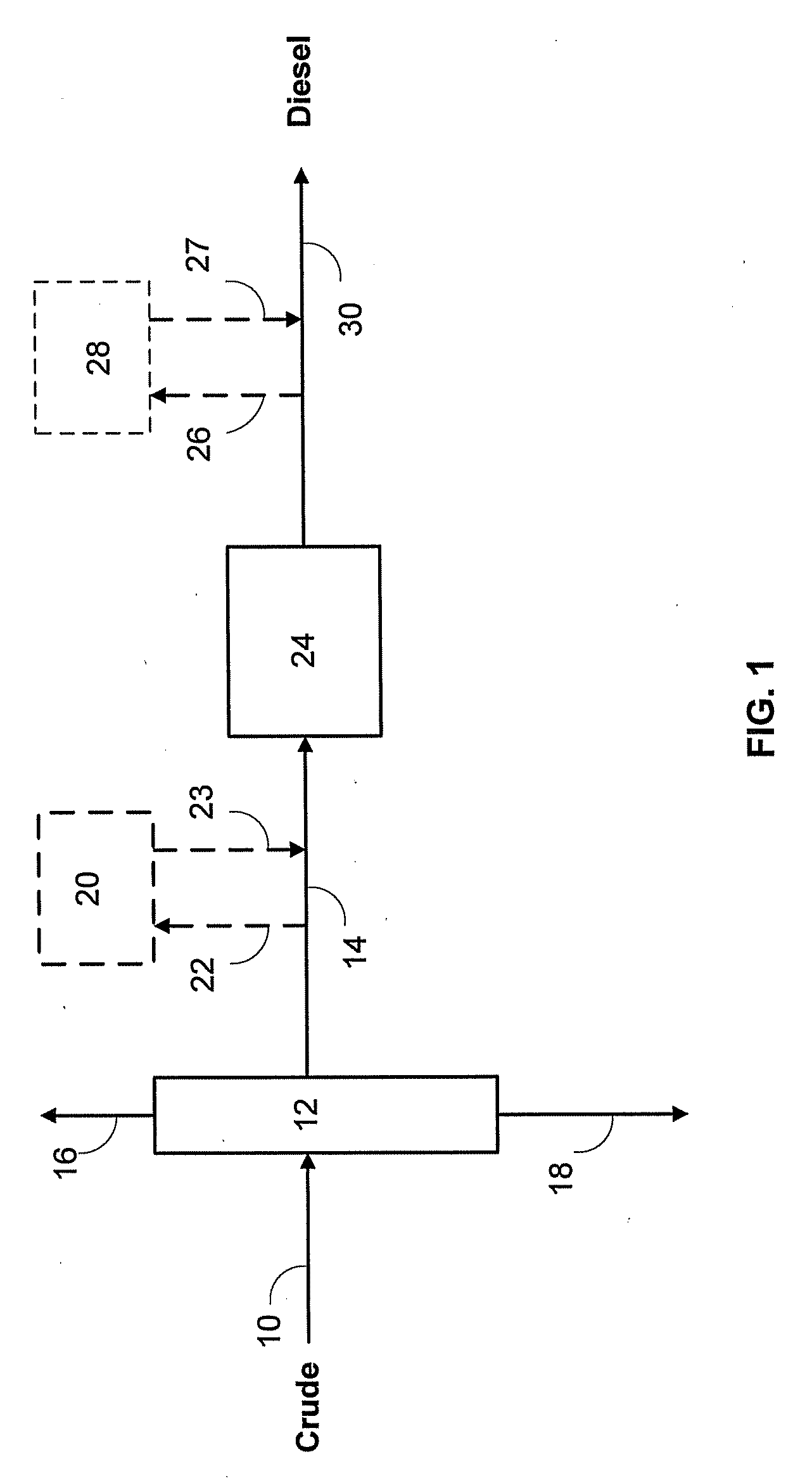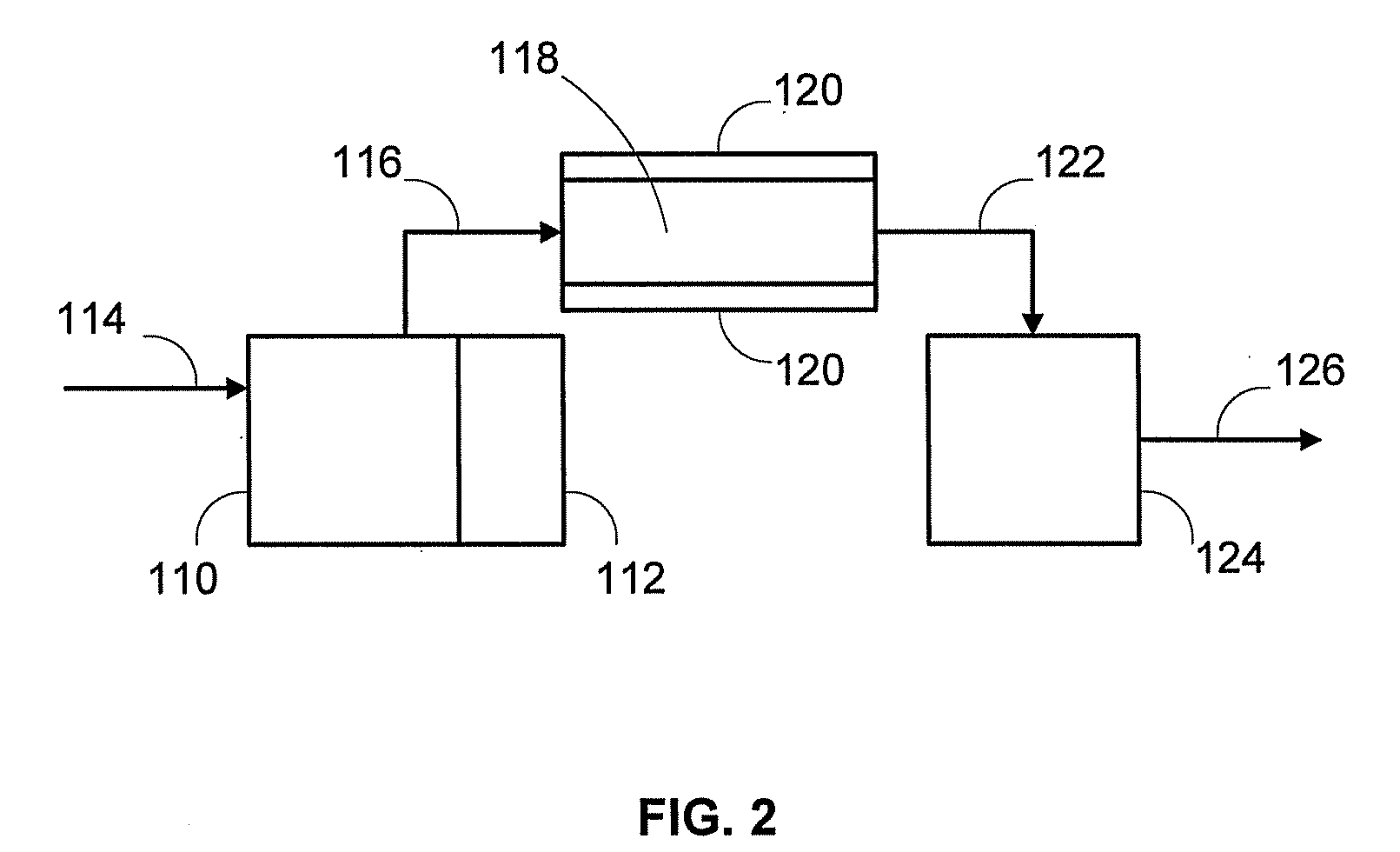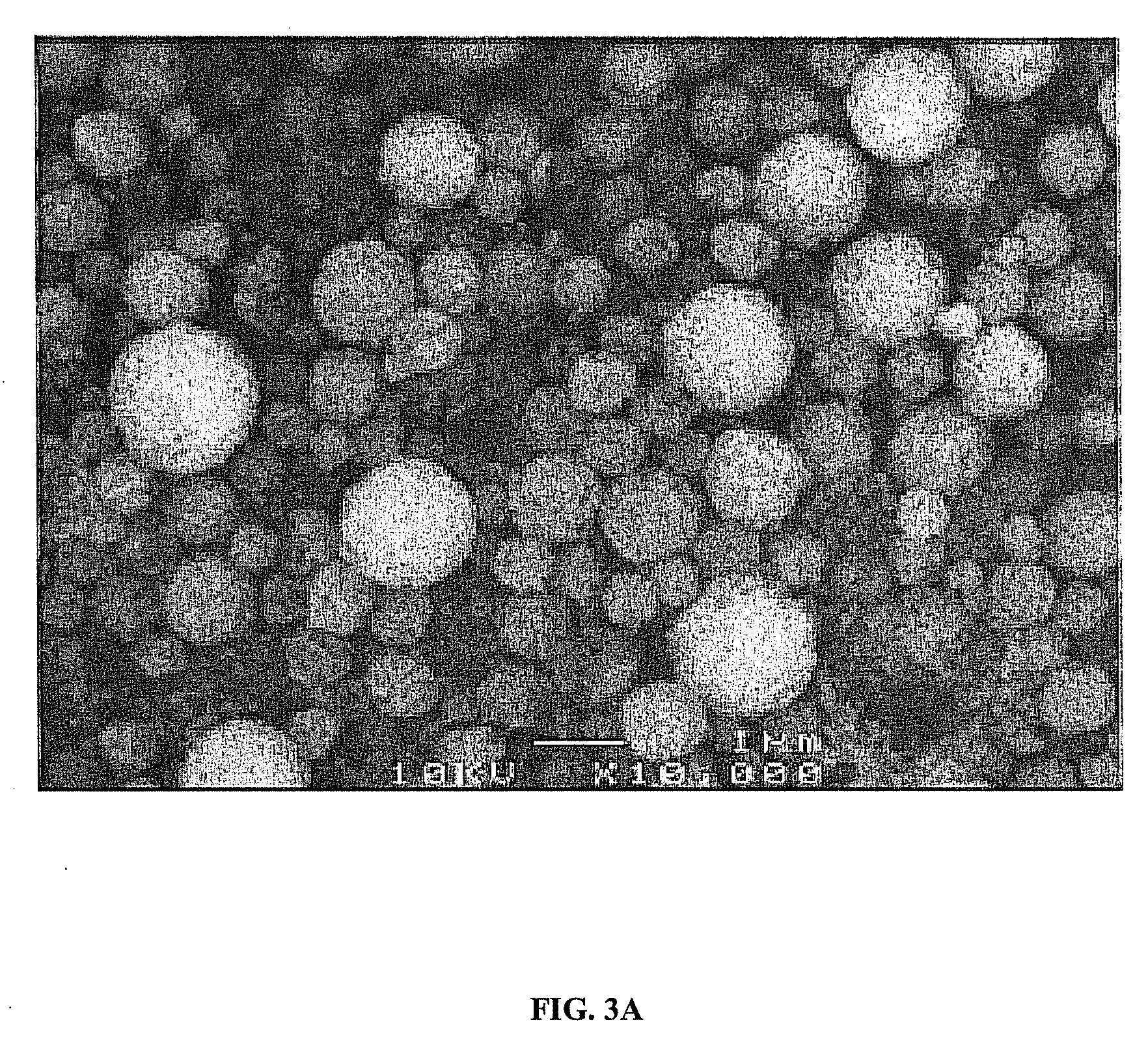Catalyst to attain low sulfur diesel
a catalyst and low sulfur technology, applied in the field of hydroprocessing catalysts, can solve the problems of reducing sulfur levels in gas oils, high construction costs, and low volumetric adsorption capacity of these adsorbents, and achieve the effect of higher activity
- Summary
- Abstract
- Description
- Claims
- Application Information
AI Technical Summary
Benefits of technology
Problems solved by technology
Method used
Image
Examples
example 1
NM5Si
[0046]An aqueous solution was prepared by dissolving 0.326 g of (NH4)6Mo7O24.4H2O (WAKO Chem.) and 0.194 g of Ni(NO3)2.6H2O in 400 mL of water. To the aqueous solution, 5 g of silicon dioxide (Aerosil 300) was added and dispersed with the aid of an ultrasonic bath to obtain a homogeneous solution. Spray pyrolysis of the solution was carried out with an apparatus consisting of an aerosol generator, a pre-heating tube, a main pyrolysis tube and a filter. The solution was aerosolized with an ultrasonic nebulizer and transported via carrier gas to the pre-heating tube, which was maintained at approximately 200° C. The aerosolized solution was then transported to the main pyrolysis tube, which was maintained at approximately 500° C. Pure nitrogen having flow rate of 3 L / min was used as a carrier gas to carry the aerosol droplets from the nebulizer, through the tubes, and to the filter. Powder formed in main pyrolysis tube was collected with a glass fiber filter having a pore diamete...
example 2
NM10Si
[0048]An aqueous solution was prepared by dissolving 0.696 g of (NH4)6Mo7O24.4H2O (WAKO Chem.) and 0.414 g of Ni(NO3)2.6H2O in 400 mL of water. To the aqueous solution, 5 g of silicon dioxide (Aerosil 300) was added and dispersed with the aid of an ultrasonic bath to obtain a homogeneous solution. Spray pyrolysis was carried out with an apparatus consisting of an aerosol generator, a pre-heating tube, a main pyrolysis tube and a filter. The solution was aerosolized with an ultrasonic nebulizer and transported via a carrier gas to the pre-heating tube, which was maintained at approximately 200° C. The aerosolized solution was then carried to the main pyrolysis tube, which was maintained at approximately 500° C. Pure nitrogen having flow rate of 3 L / min was used as a carrier gas to carry the aerosol droplets from the nebulizer, through the tubes, and to the filter. Powder formed in main pyrolysis tube was collected with a glass fiber filter having a pore diameter of 0.5 μm, whic...
example 3
NM16Si
[0050]An aqueous solution was prepared by dissolving 1.211 g of (NH4)6Mo7O24.4H2O (WAKO Chem.) and 0.721 g of Ni(NO3)2.6H2O in 400 mL of water. To the aqueous solution, 5 g of silicon dioxide (Aerosil 300) was added and dispersed with the aid of an ultrasonic bath to obtain a homogeneous solution. Spray pyrolysis was carried out with an apparatus consisting of an aerosol generator, a pre-heating tube, a main pyrolysis tube and a filter. The solution was aerosolized by ultrasonic nebulizer and transported via a carrier gas to the pre-heating tube, which was maintained at approximately 200° C. The aerosolized solution was then transported to the main pyrolysis tube, which was maintained at approximately 500° C. Pure nitrogen having flow rate of 3 L / min was used as a carrier gas to carry the aerosol droplets from the nebulizer, through the tubes, and to the filter. Powder formed in main pyrolysis tube was collected with a glass fiber filter having a pore diameter of 0.5 μm, which...
PUM
| Property | Measurement | Unit |
|---|---|---|
| temperature | aaaaa | aaaaa |
| molar concentration | aaaaa | aaaaa |
| molar concentration | aaaaa | aaaaa |
Abstract
Description
Claims
Application Information
 Login to View More
Login to View More - R&D
- Intellectual Property
- Life Sciences
- Materials
- Tech Scout
- Unparalleled Data Quality
- Higher Quality Content
- 60% Fewer Hallucinations
Browse by: Latest US Patents, China's latest patents, Technical Efficacy Thesaurus, Application Domain, Technology Topic, Popular Technical Reports.
© 2025 PatSnap. All rights reserved.Legal|Privacy policy|Modern Slavery Act Transparency Statement|Sitemap|About US| Contact US: help@patsnap.com



